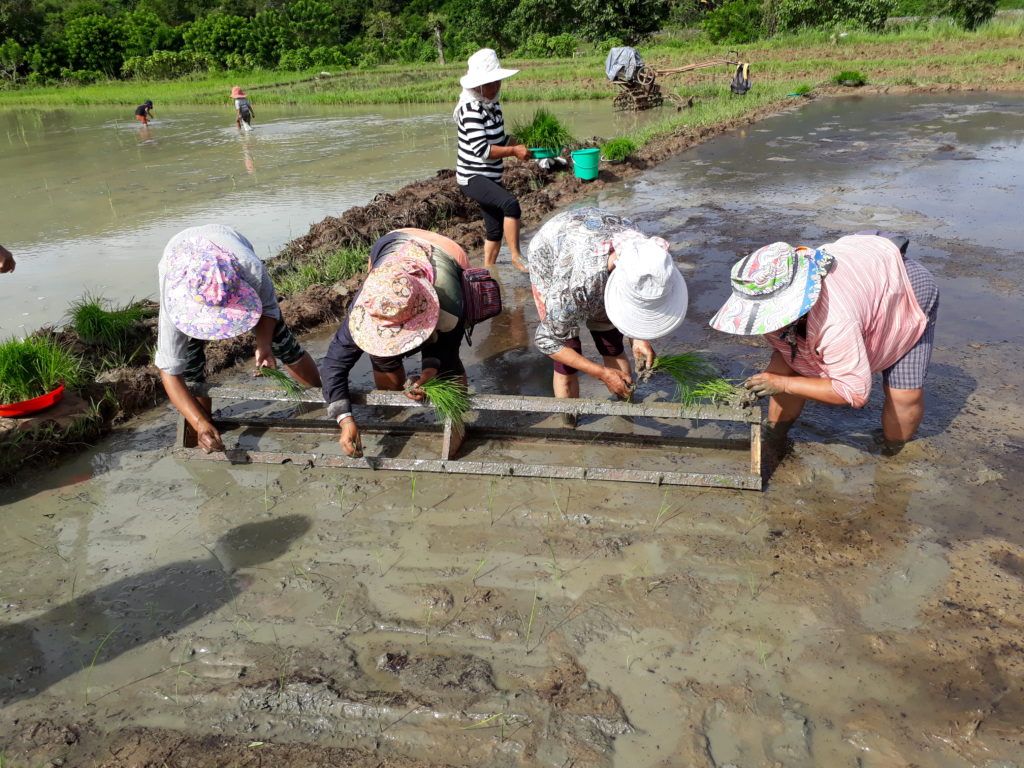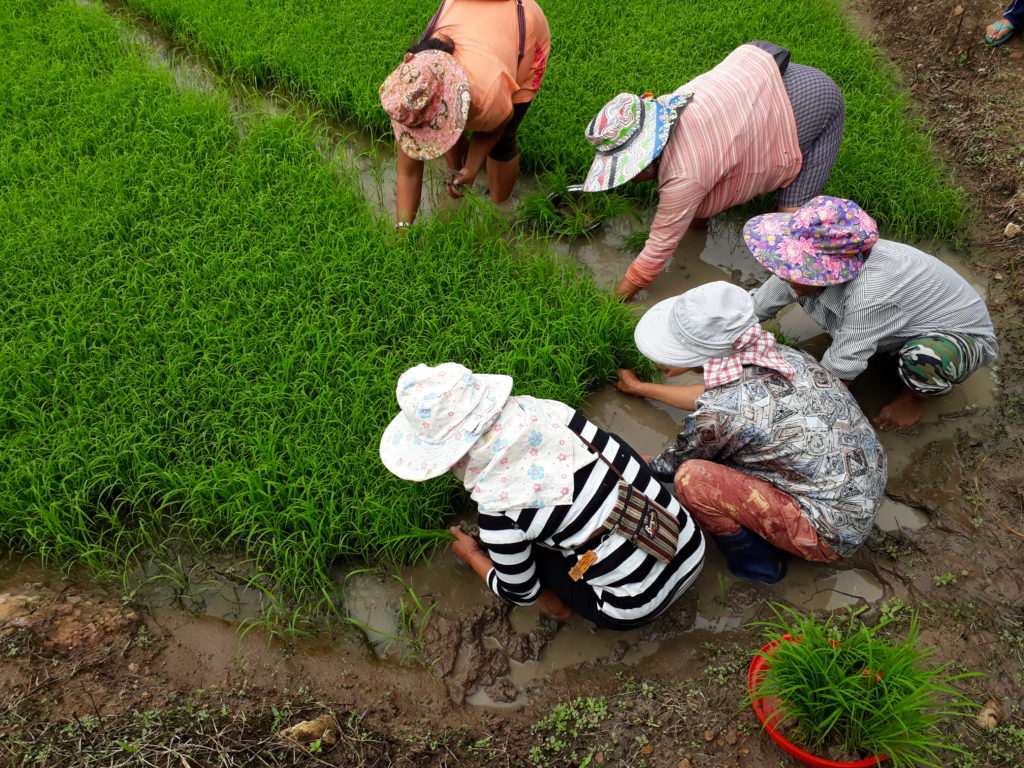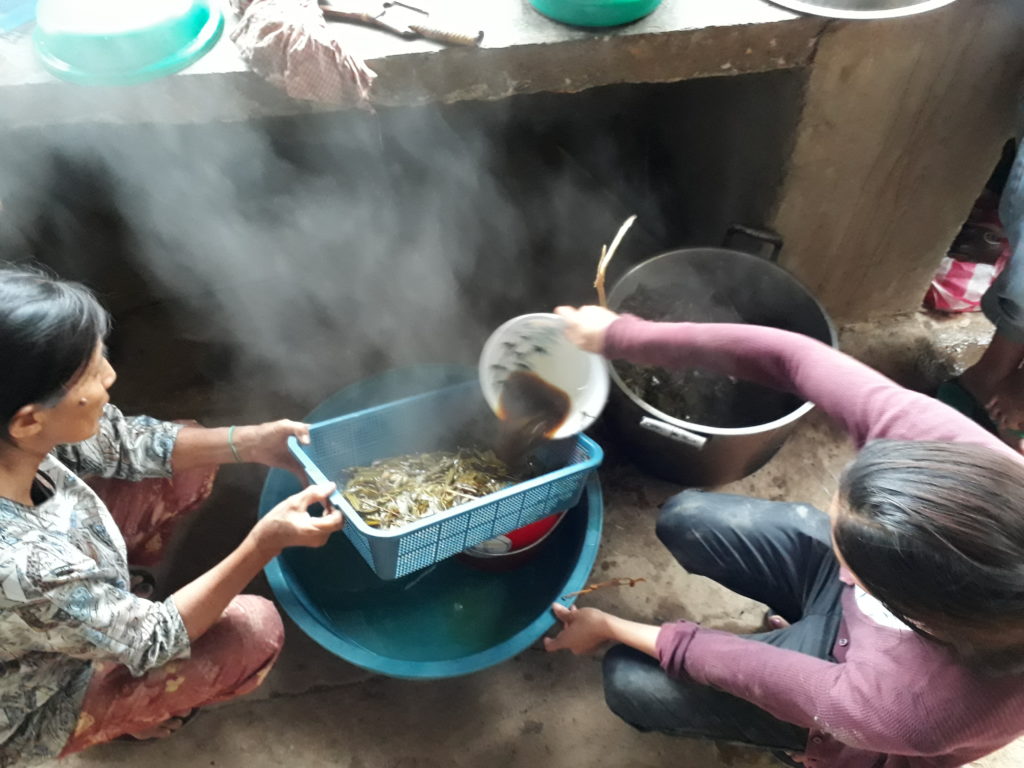
Womenmembers of the Lamag Farmers’ Association (LFA) in barangay Lamag of QuirinoIlocos Sur has started to test the use of the System of Rice Intensification(SRI) in their rice production. SRI is an agro-ecological practice for managingrice plants, soil, water, and nutrients. It has the following elements:transplanting young seedlings, single seedling per hill instead of a handful,transplanting at a wider space in a square pattern, increasing the use oforganic fertilizers and pesticides, less water use by applying wet-dry cycle ofsoil. Having these elements, SRI can result to higher yield and rice quality,the wider spacing increase the exposure of plants to sunlight, air andnutrients. Also, it is definitelyenvironment-friendly since it reduces the use of chemical fertilizers andagrichemicals.
Lamag is a farming community with rice as the main produce. It is one of the communities where the Center for Development Programs in the Cordillera (CDPC) introduces SRI method towards working for food security. In general, it aims to attain rice sufficiency in the community by raising the number of yields in the rice production. It is coupled with the revival of exemplary agricultural cropping practices including the introduction of appropriate technological innovations.
Trial Farm for SRI
The rice farm of the Chairman of the LFA was used as the trial farm for SRI. Together with the women members of LFA we transplanted the 15 days old seedlings in the rice farm. The farmers usually wait after a month to transplant seedling. In the SRI method, seedlings are transplanted as a much younger age for a better potential to grow more tillers and thus having more grains. Also, in most cases 4-5 seedlings were use per hill, with only 1 seedling per hill in SRI, it implies a reduction of production costs of seeds.
As stated by Fidella Alliga “ mayat nga i-apply dagiti padak nga manalon ta bassit laeng ti bunobon nga mausar gapu ta single plant per hill nu ti kapadasan mi nga 4-5 plants/hill ngem bassit met latta ti iproduce na nga production” (The SRI method will be favorable to us farmers since only one seedling is use per hill compared to the usual 4 to 5 seedlings per hill that can only produce lesser yields)
Before transplanting, we applied a one sack of biofertilizer which is made up of a decomposed shredded sunflower mixed with chicken dung.

After transplanting the seedlings, we helped the women farmers in preparing organic fertilizers and pesticides for the tending of the rice plants. As alternative to chemical pesticides we boiled paswik leaves(a pesticidal plant grown in the community) and have it cooled. One of the challenges in transplanting young seedlings is that it is prone to golden snails. The paswik juice can be applied for pest management. On the other hand, we made a foliar fertilizer using chopped banana trunks mixed with molasses and needs to undergo fermentation for seven days.
CDPC strongly promotes for farming communities in the Cordillera to utilized available resources in tending for their crops. Agrochemical inputs are expensive and hence the use of organic fertilizers and pesticides reduces this cost. In addition, organic fertilizers enhance soil fertility that could improve the quality of rice produced.


The SRI method can help in achieving rice sufficiency in the communities and at the same time promoting sustainable agriculture. Shifting to SRI which employs agro-ecological principles is hindered by strong market of conventional farming methods to increase yield. The heavy use of chemical fertilizers and pesticides affects soil and water quality. Food security is at stake when our basic farming resources are no longer sustainable due to conventional farming practices. Promoting an alternative method like the SRI is a difficult challenge especially if this farming practice has to deviate from the usual conventional practices of the community. Hence, conducting trial farm productions is seen as effective tool to convince the farmers of the different benefits of SRI in rice production. ***Mathet Basia and Lydia Boclig
originally uploaded August 1, 2018
